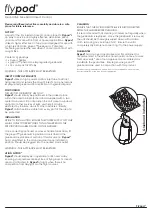
74
In the fabrication of the prosthesis following sub-
merged healing or after impression taking using the
components of the Ankylos Balance C/ prosthetics
range, the Ankylos SynCone abutments are now
selected and positioned. The steps shown on these
two pages are omitted in the case of immediate
loading or simplified impression via the SynCone caps,
as the abutments have already been incorporated in
the patient’s mouth. In this case, commence directly
with the fabrication of the framework, as described
from page 75 onwards.
Selection of prosthetic abutments
Select the Ankylos SynCone
abutments according to sulcus
height and the angulation
necessary to compensate for the
axial divergence of the implants.
The equator of the abutments
should lie slightly supragingival.
Screw retain straight abutments
directly using the 1.0 mm hex
laboratory screwdriver; insert
angled abutments only into the
implant analog.
Parallelization of abutments
Place the parallelization gauge
on all abutments. For angled
abutments, the parallelization
gauge is to be placed such that the
channel for the central straining
screw can be accessed via the
window.
Adjust the angled abutments to
a common parallel direction of
insertion in the parallelometer.
Here, the insertion key for Standard
angled abutments provided in the
prosthetics kit can be used as an
aid for turning the abutments via
the parallelization gauges. This key
can be attached to the shaft of the
gauges.
First, screw in the 7.5°-angled
abutments with the 7 mm
screw handle, then remove the
parallelization gauge and tighten
the straining screw with 10 Ncm
using the laboratory screwdriver.
Step-by-step:
Selection of prosthetic abutments
SynCone® C/ | Overdenture on tapered crowns
















































